Hair Brush Types And How To Use Them
Understand why you should be mindful about choosing the best hairbrush for your locks.
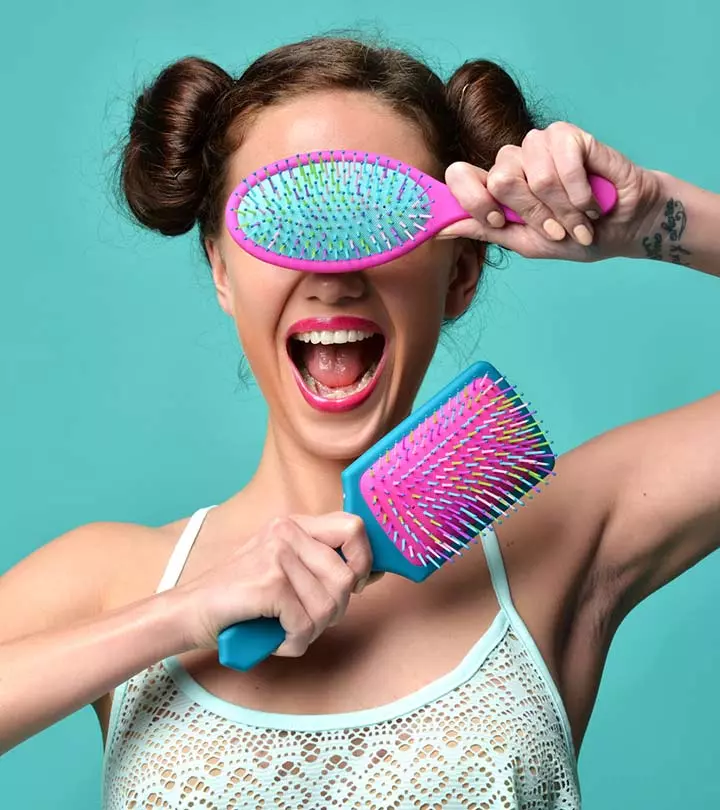
Image: Shutterstock
If you can’t decide which brush to pick for your hair, you have come to the right place. With our detailed analyses of the different hair brush types, we will help you select the best one for your hair. For the good health of hair, it is very important to have a good hairbrush that suits your hair and scalp needs. For instance, there are different brushes for detangling the hair and for styling it. Moreover, every hairbrush has its specialty. For example, some brushes are good for curly hair, while others work better with silky hair. Using the wrong brush does not just entail undesirable results but may also damage your hair. Hence, knowing about different hair brush types and their functions is important to ensure great hair health and appearance. Read on to know all about them!
 Fun Fact
Fun FactIn This Article
Why Choose A Good Hair Brush?
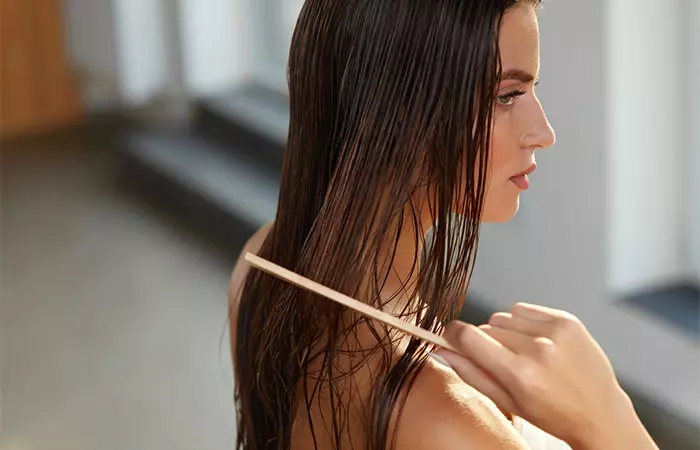
Most of us tend to ignore the importance of picking the right hairbrush. Using the wrong brush or brushing your hair in the wrong way can damage your hair over time. It may lead to problems like hair breakage, weak hair strands, or even hair loss (1). A good hair brush that suits your hair’s type and texture can affect the overall hair health and appearance. It can:
- Improve hair texture
- Detangle the hair
- Minimize breakage
- Reduce frizz
- Prevent static
- Style the hair
Not all hair brushes are meant for all hair types. For instance, a hair brush for straight hair will not work well on curly hair or vice versa. Moreover, hair brushes have different purposes. Some are best for styling, while the others are suitable for detangling. They also differ in shape, depending on the purpose and hair type. You will find curved, cushioned, and rounded brushes. In the next section, find out which type of hair brush is suitable for what.
Key Takeaways
- Hair brushes not only detangle your hair and reduce frizz but also improve hair texture and style.
- A vented brush is great for blow drying your hair, while a round hair brush is great for styling and blowouts.
- A boar bristle brush is suitable for curly hair, and a paddle brush is great for detangling straight hair.

Hair Brush Types: Which Hair Brush To Use And When
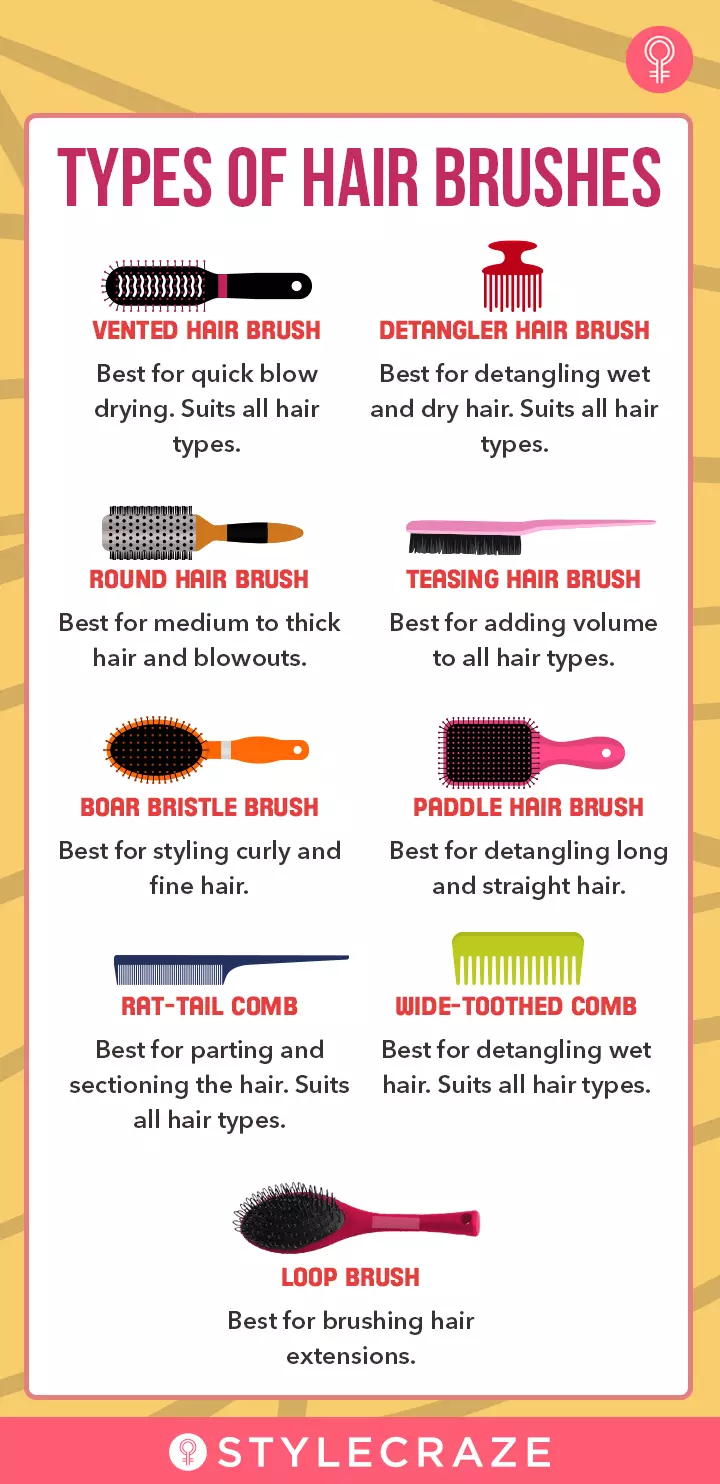
1. Paddle Hair Brush
Best For: Long and straight hair
Suitable For: Detangling
The paddle brush helps to quickly detangle the hair, getting rid of knots without tugging on your hair. It has a flat and wide surface to allow easy movement and better coverage.
A paddle hair brush goes with the natural hair pattern. While it is best for straight hair, people with curly and wavy hair can also use this brush. However, if you have thick hair, choose a paddle brush with nylon or synthetic bristles.
Mistakes To Avoid:
- Do not use a paddle brush on soaking wet hair, as it can stretch and weaken the hair strands.
- Do not use brushes with very hard bristles if you have a sensitive scalp.
2. Round Hair Brush
Best For: Medium to thick hair (wavy)
Suitable For: Blowouts
A round hair brush is apt for blowouts. This type of hair brush has a metal barrel that heats up when used with a blow dryer. The round brush helps tame frizz and adds body, volume, and bounce to the hair. It is available in different sizes.
Small brushes are useful for creating tight curls, while round brushes with large barrels are good for straightening or creating subtle waves. If you have fine hair, you can use round hair brushes. However, pick one that has mixed or natural boar bristles.
Mistakes To Avoid:
- Do not skip heat protectants when using metal barrel brushes. It can lead to severe heat damage.
- Do not twist the brush too tightly. It may cause tangling and breakage.
3. Teasing Hair Brush
Best For: All hair types
Suitable For: Adding volume
A teasing hair brush is best for all hair types including short or thin hair. It lifts the roots to create an illusion of volume. It teases the hair, creates texture to support different hairstyles, and adds a base at the roots. The point-ended handle is for sectioning the hair, and the brush is for teasing. Avoid this brush if your hair is fragile.
Mistakes To Avoid:
- Avoid daily teasing. Over-teasing can damage the cuticle layer.
- Never tease wet or damp hair as it increases breakage.
4. Wide-Toothed Comb
Best For: All hair types
Suitable For: Detangling wet hair
A wide-toothed comb is best for brushing wet hair to prevent damage and breakage. It also helps distribute conditioner and hair masks as it has thick teeth with wide gaps. This type of comb is also good for brushing thick and curly hair.
Mistakes To Avoid:
- Do not comb out the knots forcefully. Always start gently from the ends and move your way up.
- Avoid cheap plastic combs as they can create static. Opt for carbon or wooden ones for a smoother experience.
5. Detangler Hair Brush
Best For: All hair types
Suitable For: Detangling wet and dry hair
The detangling brush handles all hair types, including thick and curly hair, gently. It prevents hair damage from knots and breakage. Detangler brushes have wide and flexible plastic bristles to undo knots painlessly.
Mistakes To Avoid:
- Avoid brushing aggressively to minimize breakage.
- Do not use on heavily tangled hair without applying a detangling spray.
6. Rat-Tail Comb
Best For: All hair types
Suitable For: Parting and sectioning
The rat-tail comb is ideal for parting the hair into sections. It has a long and pointed end for sectioning and closely placed bristles to tease and backcomb the hair.
Mistakes To Avoid:
- Do not use it for detangling as the fine teeth can worsen knots.
- Avoid using excessive force while parting the hair to prevent scalp irritation.
7. Vented Brush
Best For: All hair types
Suitable For: Quick blow dry
The vented brush works wonders in lesser time. If you don’t have time to comb your hair properly, the vented brush helps you quickly blow-dry wet hair. The holes allow the hot air to pass through, speeding up the drying process.
Mistakes To Avoid:
- Do not skip a heat protectant spray when using this brush, as it may dry out hair.
- Avoid using it for detangling. It is not built for heavy knots.
8. Boar Bristle Brush
Best For: Curly and fine hair
Suitable For: Styling
The natural boar bristle brush is best for distributing the natural oils throughout the hair length. It gently glides through the hair without snagging and is best for styling fine hair.
Mistakes To Avoid:
- Do not use on wet hair as it will not glide properly and may cause breakage.
- Do not neglect its maintenance. Clean regularly, as the natural bristles tend to collect oil and dirt.
9. Loop Brush
Best For: All hair types
Suitable For: Brushing hair extensions
This brush has looped bristles that glide through the hair extensions without pulling at them. Loop brushes suit all hair types.
Mistakes To Avoid:
- Do not use a regular brush on extensions. It can loosen bonds or wefts.
- Avoid brushing wet extensions unless recommended.
10. Thermal Brush
Best For: All hair types
Suitable For: Adding curls and waves
This brush is designed with heat-resistant materials that make it compatible with hair dryers or heated styling tools. It efficiently distributes heat, allowing for effective styling without causing damage. The barrel of the brush heats up, enabling effortless curling and waving while providing a smooth finish. These brushes usually have nylon bristles that make it easier to style and blow-dry your hair. However, it is essential to use this brush with caution. Opt for this brush if you desire effortless curls and waves without compromising your hair’s health.
Mistakes To Avoid:
- Do not use it on wet hair, as it may damage the strands and cause breakage.
- Do not overbrush with this brush and move it quickly. Overheating the brush without moving it can burn hair.
Right from braids to updos, there is a specific brush for each hairstyle. Read the guide to know the hair brush for the most common looks.
The Best Brushes For Different Hairstyles
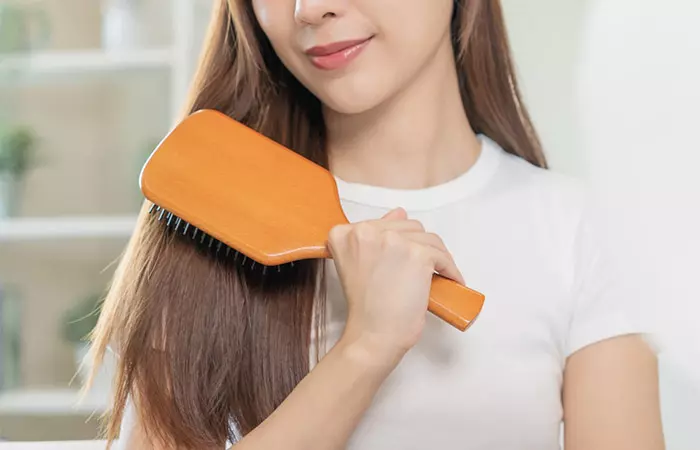
- Straight Hairstyles: Paddle brushes are the best for a straight hairstyle. They have widely spaced bristles on a flat paddle to create a frizz-free and poker-straight look.
- Curly Hairstyles: Curly hair is prone to tangles and knots. A wide-toothed comb is best for detangling curly hair with minimal damage. For styling, you can use round brushes. These are ideal for defining the curls and imparting lift and volume.
- Blowout Hairstyles: Round brushes work best for salon-like blowouts. Working with a round brush might seem tedious at first. However, it adds bounce and volume to your hair. You may also use a natural bristle or boar bristle brush to impart sheen to the hair strands.
- Updo Hairstyles: For a perfect updo, you may need a mix of brushes. A wide-toothed comb helps to detangle the hair, and a rat-tail comb is good for parting the hair and teasing or backcombing the roots to add volume. Follow up with a boar bristle or an ionic brush to smooth the strands.
 Trivia
TriviaHow To Choose The Best Hair Brush For Your Hair Type
- Choose As Per Your Hair Type And Concern
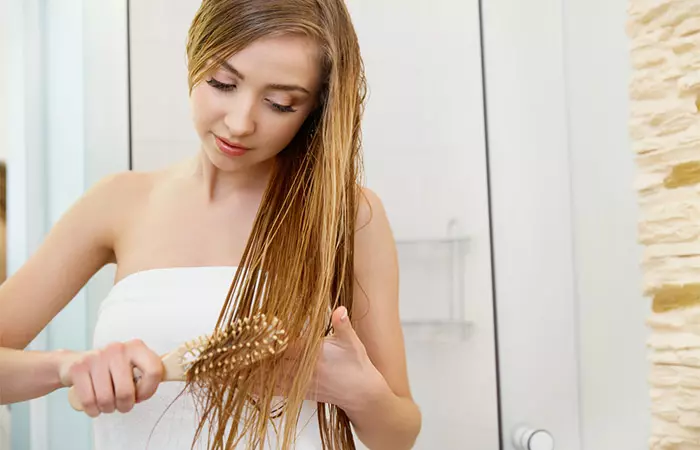
If you have fine hair, you should be extra careful about the brush. Use round, paddle, and vented models with hair-enhancing properties. If you have coarse and thick hair, choose a boar bristle brush to distribute the natural oils across the hair length. If your hair gets tangled easily, use a brush with synthetic bristles or a combination of nylon and boar bristles to go through the strands. A soft-bristle hair brush is best for wet hair.
- Choose As Per Styling Needs
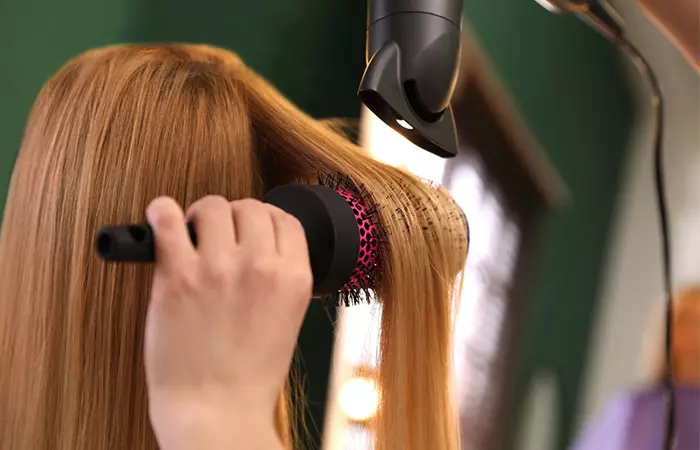
Pick a brush that meets your hairstyling needs. A vented barrel is best for an ultimate blowout. Use a round brush and a vented brush to increase the hair volume through waves and curls. Use a small round brush for tight and neat curls. If you have straight hair and are looking for smoother results, use cushion brushes with nylon bristles.
- Choose Thermal Barrels For Fast Drying
The barrels are as important as the bristles. The thermal barrels can hold the needed heat required for faster drying and regulate the temperature effectively to prevent heat damage. Also, check if the barrel has vents. Vented barrels allow free hair movement to avoid tangles. Simultaneously, tourmaline and ceramic barrels help in reducing frizz and add shine.
- Choose High-Quality Hairbrushes
The quality of your hairbrush is important too, as high-quality brushes use premium materials to enhance styling. Further, these brushes usually feature well-designed, smooth bristles that are less likely to snag your hair, leading to minimized breakage, split ends, and tangles. They are also long-lasting and need not be replaced too often. So, while high-quality brushes may cost more upfront, they are a better investment over time.
While it’s important to choose the correct type of hair brush, it’s also essential to learn how to brush your hair the right way. It’s because using the correct brush and following the right brushing techniques helps minimize damage and breakage. So, choose wisely. Along with this, you should also know how to take care of your hair brush to ensure longevity. Learn more about this in the next section.
Maintenance Tips For Hair Brushes
Here are some simple tips that will help you maintain your hair brushes:
- Remove any hair caught in the bristles after each use.
- Wash your hairbrush once a week by soaking it in warm water with a little shampoo or mild cleanser for 10 to 15 minutes. Then, gently scrub it using an old toothbrush and rinse thoroughly. Ensure it is completely dry before storing it away to prevent mold growth.
- If you have a wooden brush, avoid soaking it in water. Instead, use a damp cloth to clean the bristles and handle.
- Store your brush in a closed space when it is not in use. This will keep it safe from dust and dirt.
Infographic: The Right Hair Brushes To Choose As Per The Hair Type
Choosing a good brush keeps your hair protected and strong against damage and increases blood circulation to your hair follicles. It is always a good idea to use a brush that suits your hair type and texture. For example, while some hair brushes help maintain your curls, others work best on straight hair. Check out the infographic below to know which hair brush is suitable for your hair type.
Some thing wrong with infographic shortcode. please verify shortcode syntaxPeople often overlook the importance of choosing the right hair brush types for their hair. However, picking the right hairbrush for your locks can significantly impact the appearance and feel of your hair. Not all hairbrushes are suitable for all hair types and serve the same purpose. Since you will be using a hairbrush daily, choosing the proper tool for your hair type and texture is critical for maintaining its beauty and volume. We hope that this hairbrush buying guide will assist you in understanding the choices you have and choosing the best hairbrush for your perfect hair days.
Frequently Asked Questions
Is it better to brush hair wet or dry?
It is always best to brush your hair when it is completely dry. Wet hair strands are stretched, weakened, and vulnerable; brushing them can lead to breakage.
Do brushes damage hair?
Brushing your hair incorrectly and using the wrong brushes can lead to damage.
Is brushing hair healthy?
Yes. Brushing your hair is healthy and necessary to keep it tangle-free, manageable, and shiny. It has numerous benefits. However, you must know the right brushes and way of brushing for your specific hair type.
Is brushing your hair before bed good?
Yes. Hair experts recommend brushing your hair twice a day. In the morning as well as before going to bed at night. It ensures good hair health.
Illustration: Types Of Hair Brushes: Different Hair Brush Types & How To Use Them
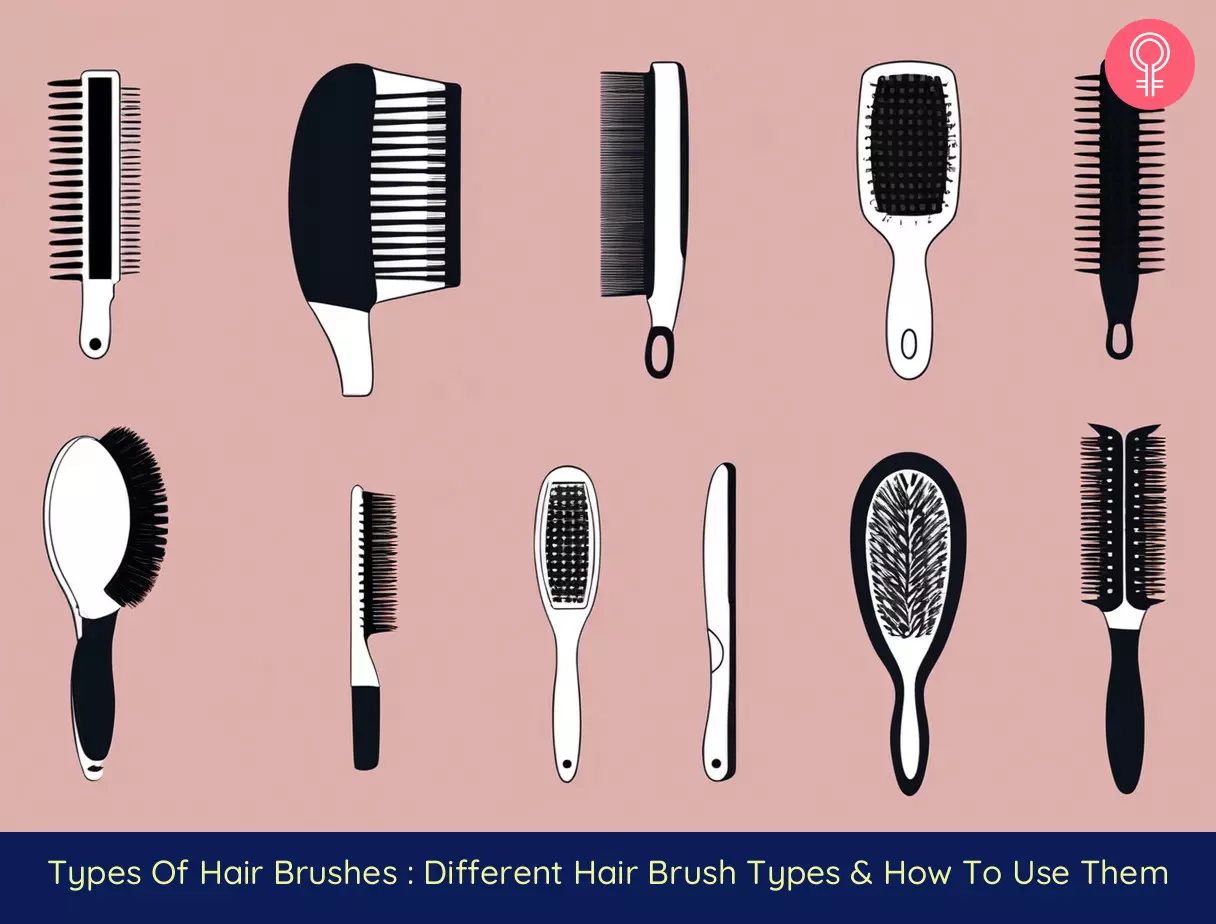
Image: Stable Diffusion/StyleCraze Design Team
Do you wish to learn about the different types of brushes and how to use them to create a perfect hairstyle? Check out the video below and get ready to brush up on your hair brush knowledge!
References
Articles on StyleCraze are backed by verified information from peer-reviewed and academic research papers, reputed organizations, research institutions, and medical associations to ensure accuracy and relevance. Read our editorial policy to learn more.
- Hairbrushes: A Guide for Dermatologists
https://pubmed.ncbi.nlm.nih.gov/18305876/
Read full bio of Yvey Valcin
Read full bio of Anjali Sayee
Read full bio of Eshna Das
Read full bio of Vaishali Sinha






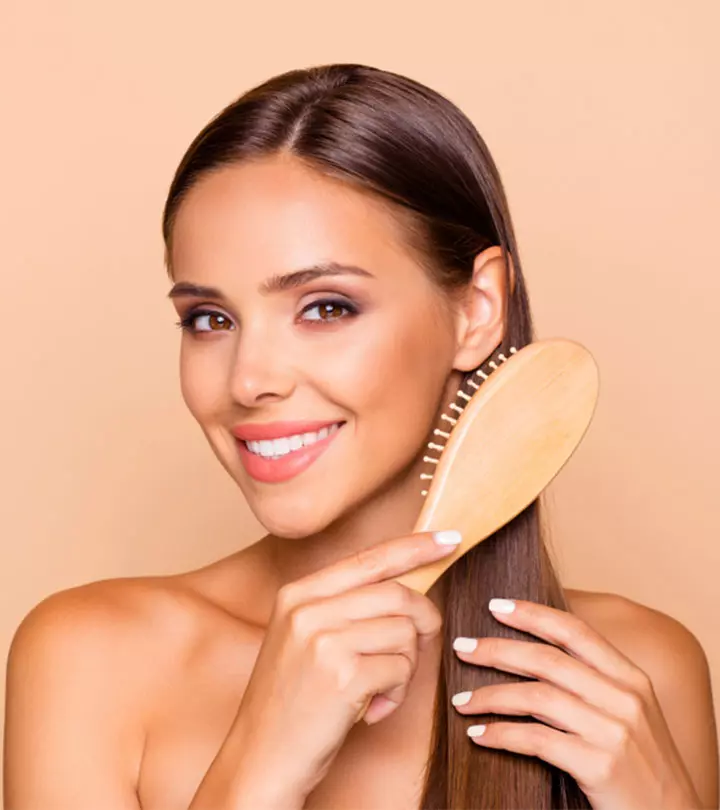
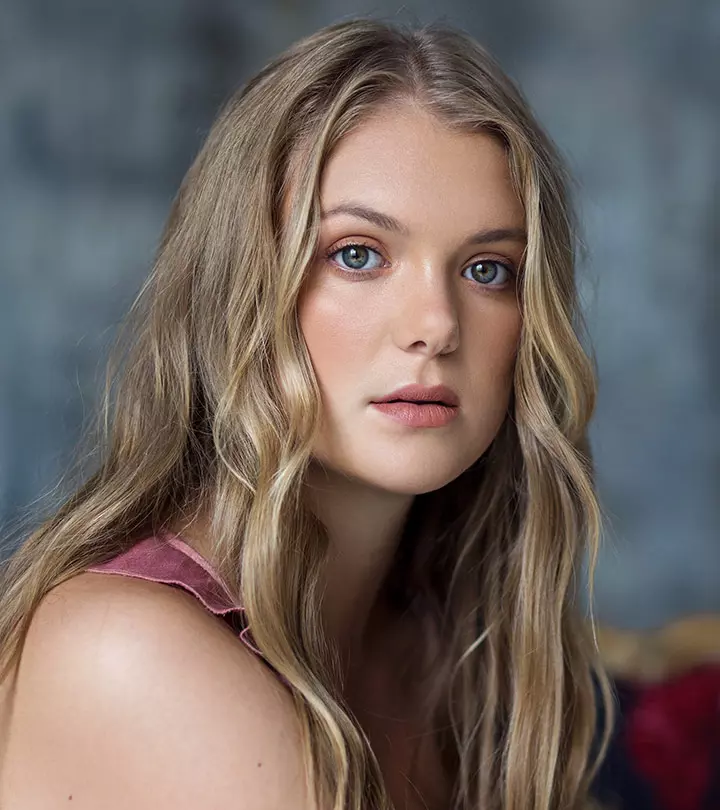
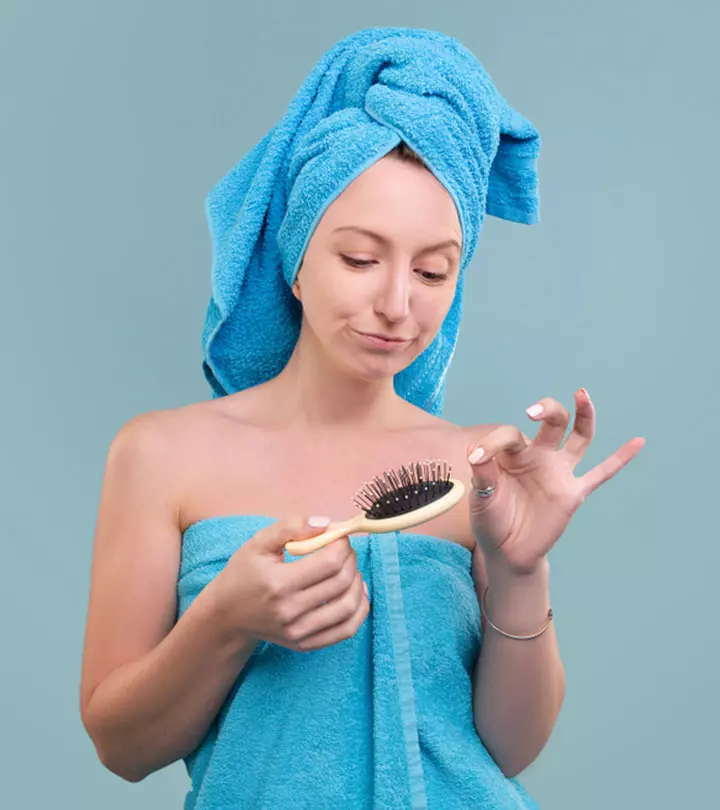
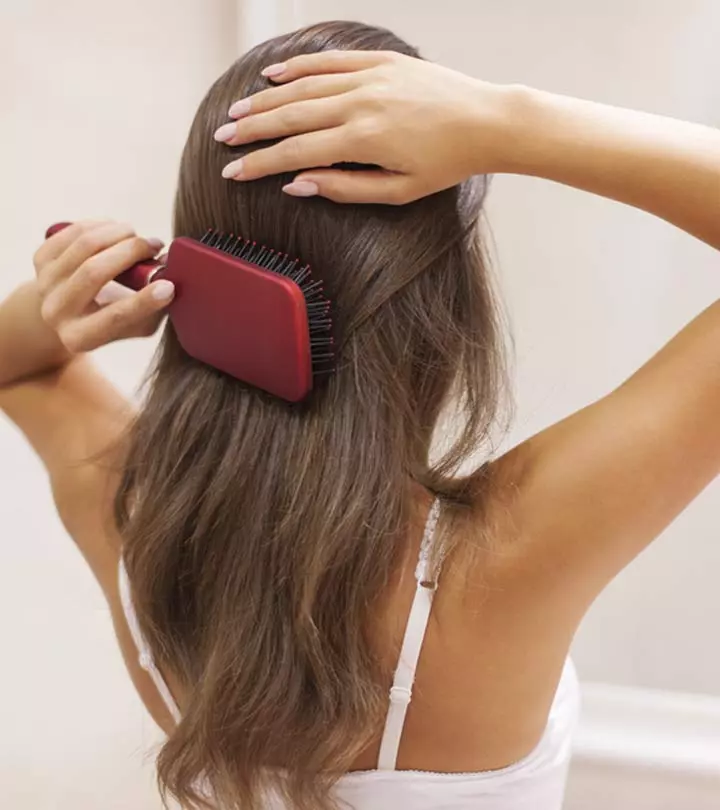
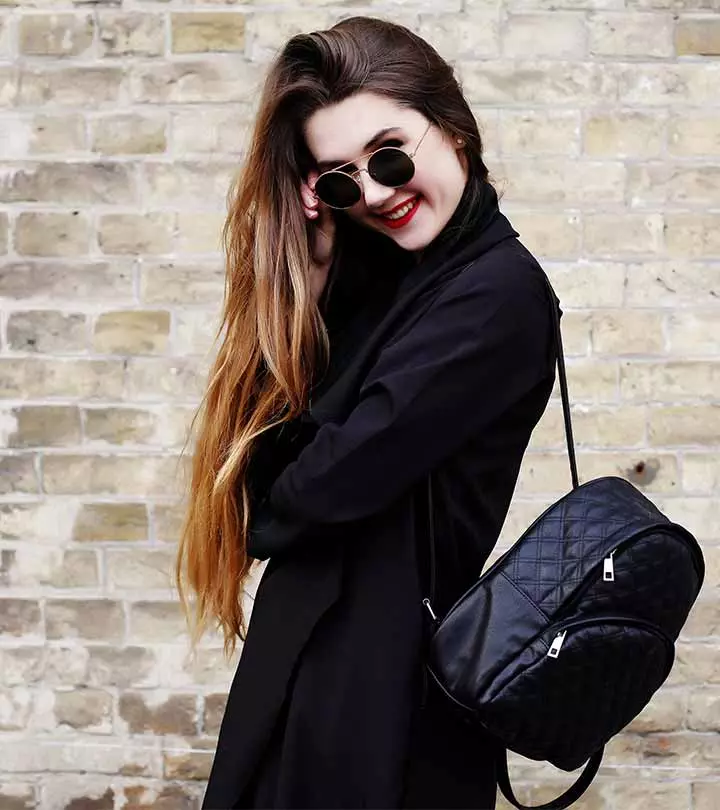

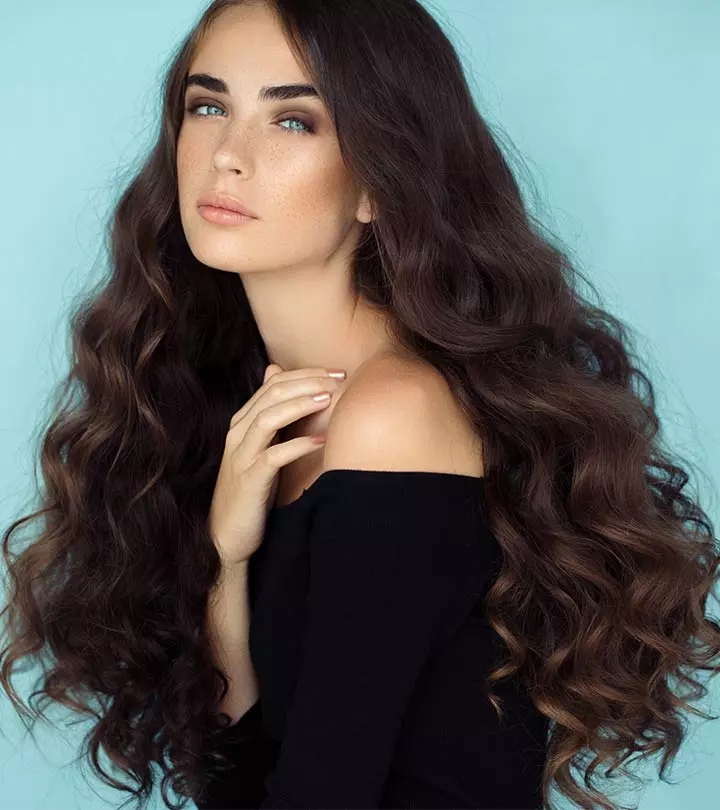
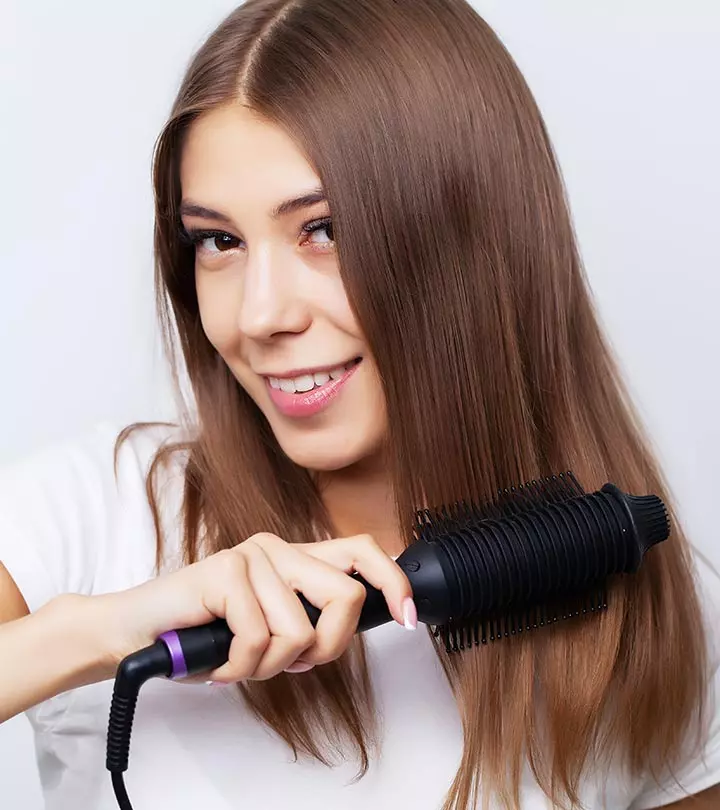
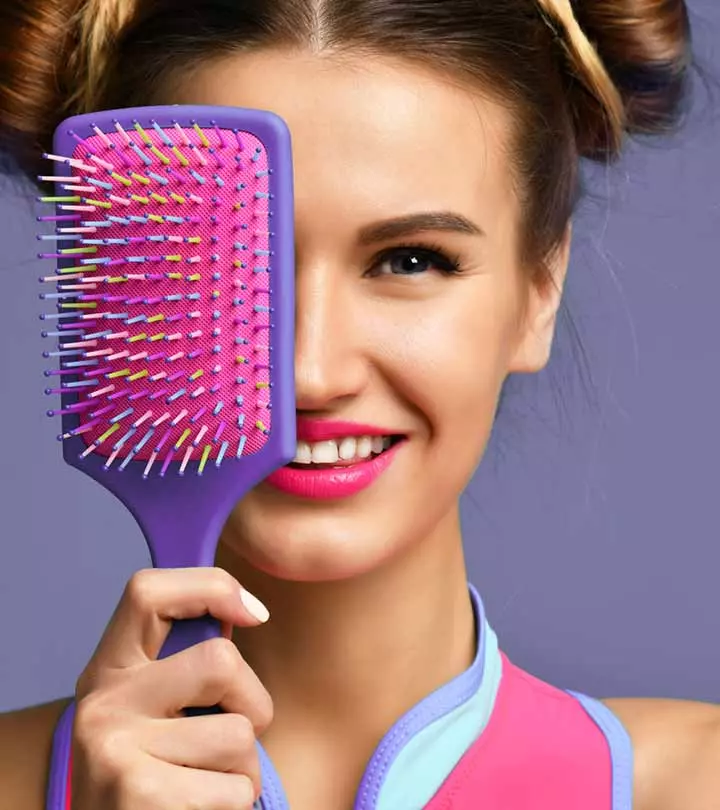
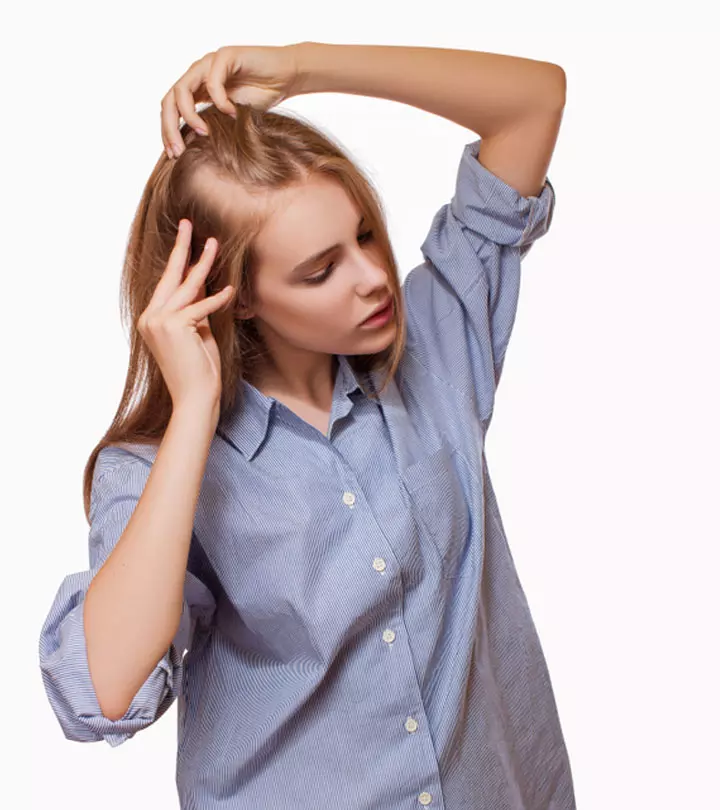
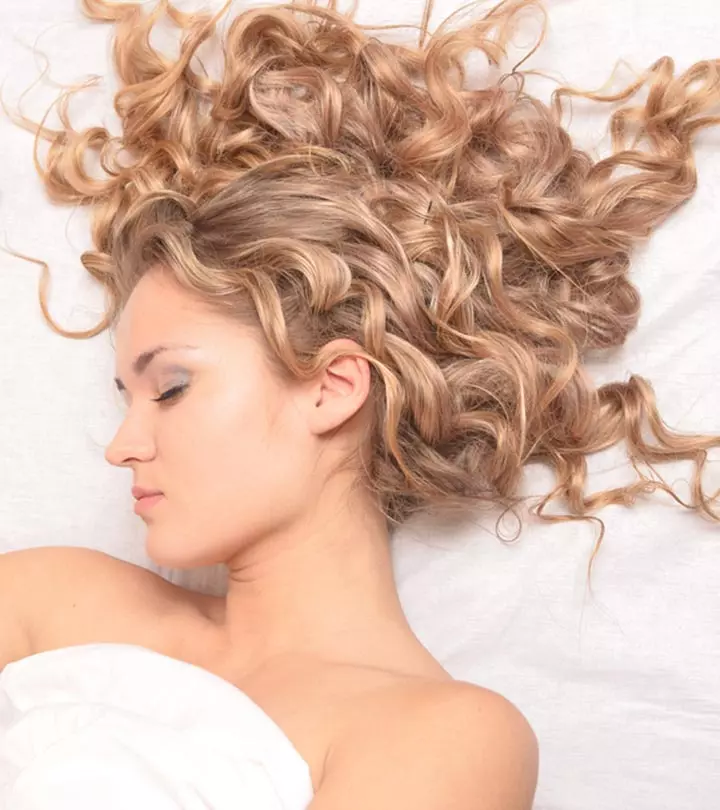
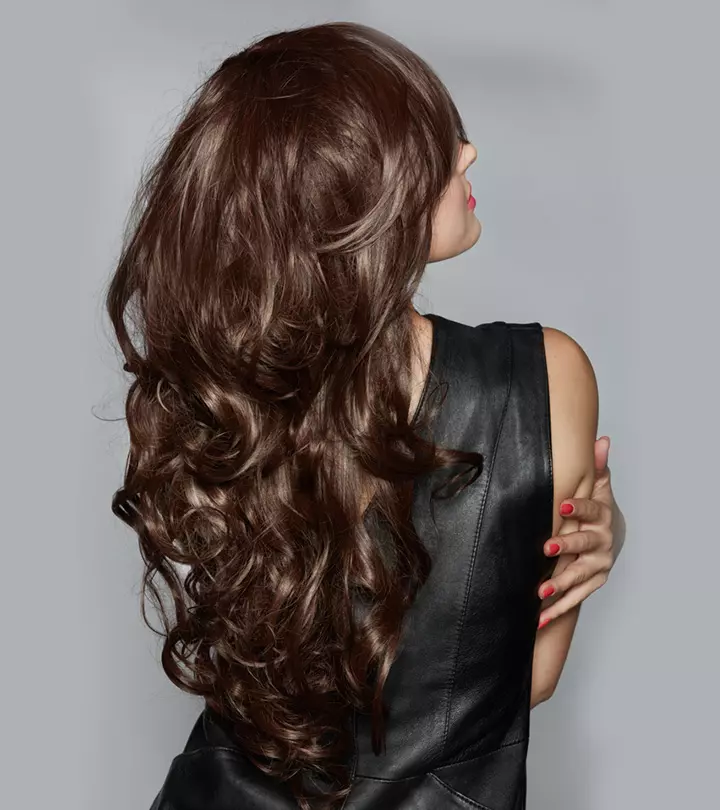

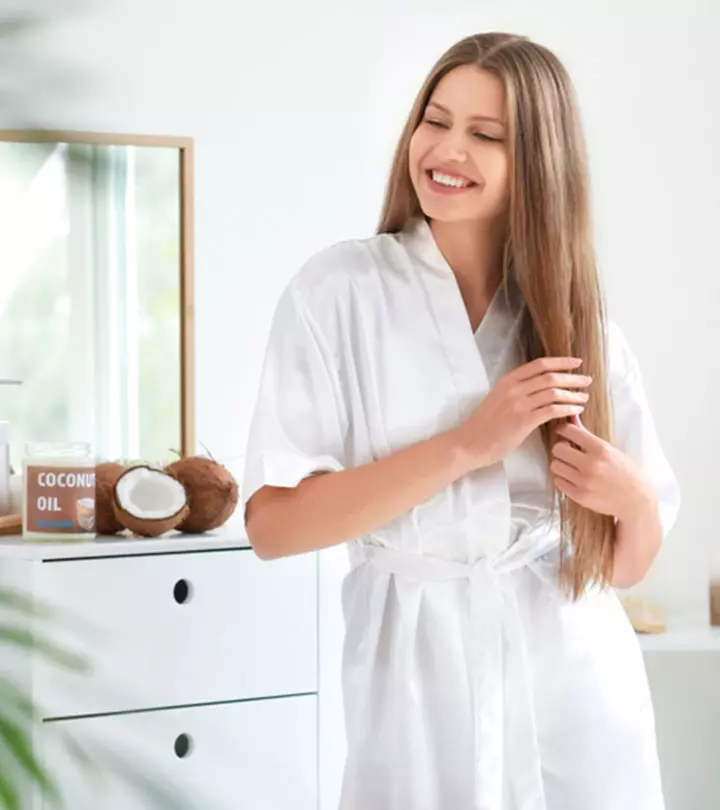

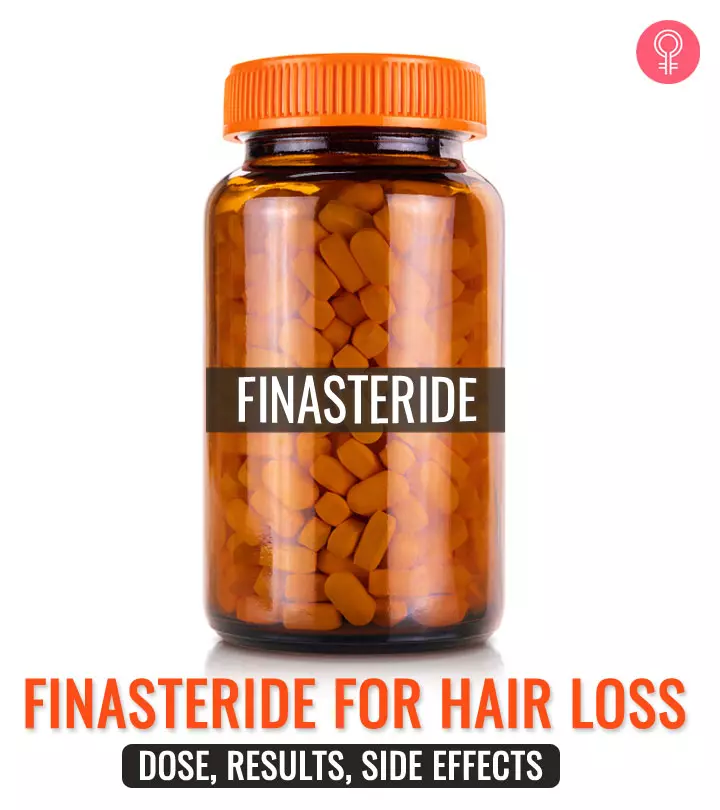
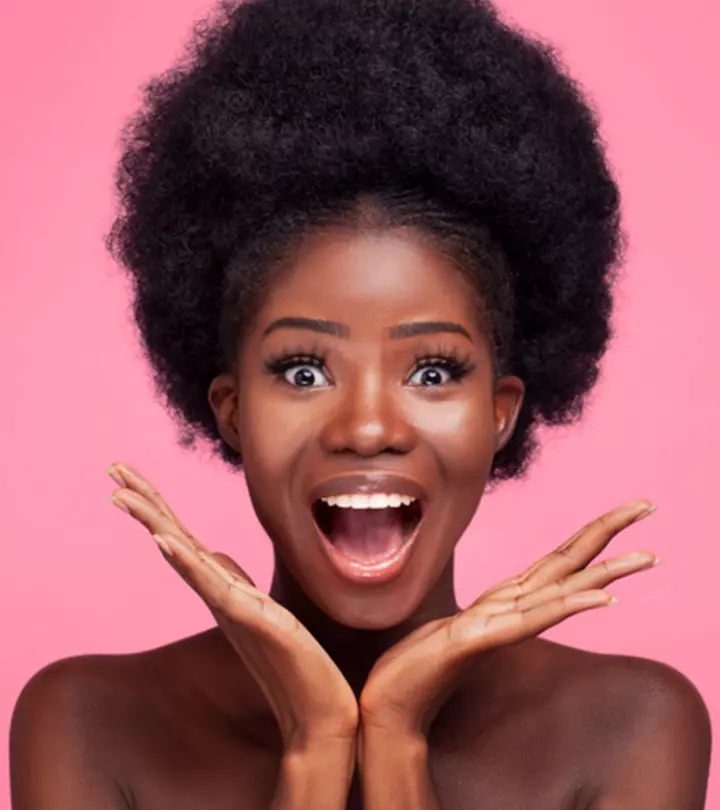
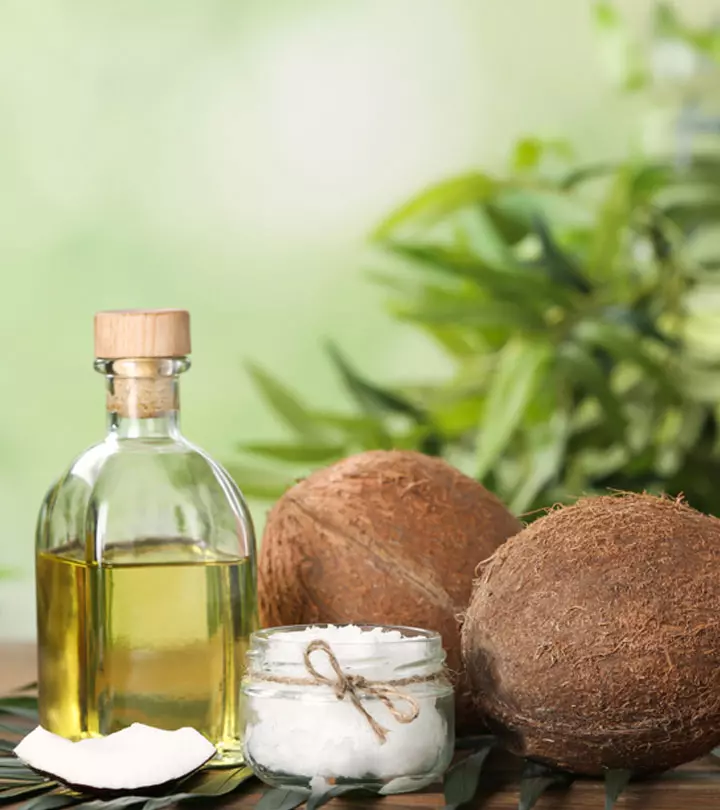
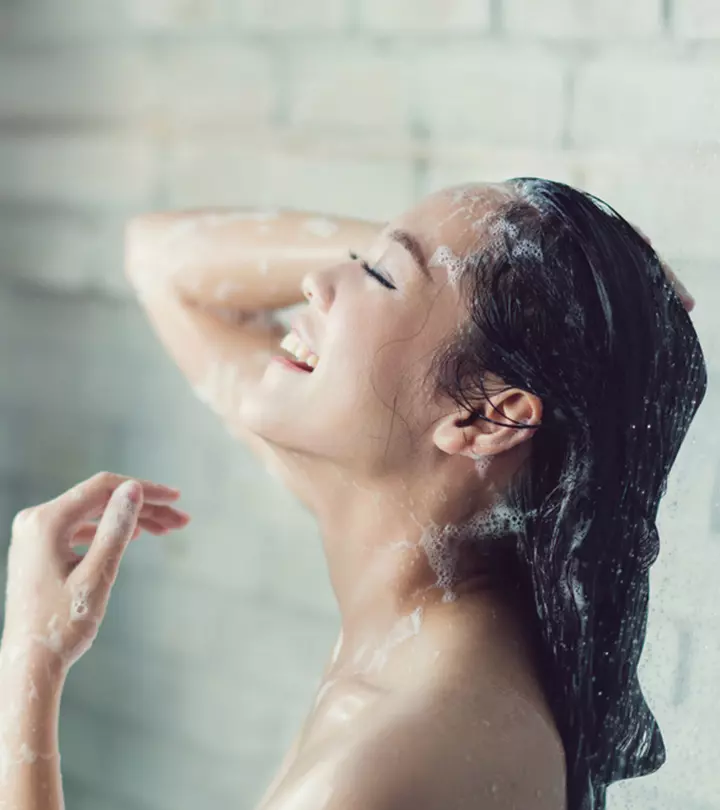

Community Experiences
Join the conversation and become a part of our empowering community! Share your stories, experiences, and insights to connect with other beauty, lifestyle, and health enthusiasts.